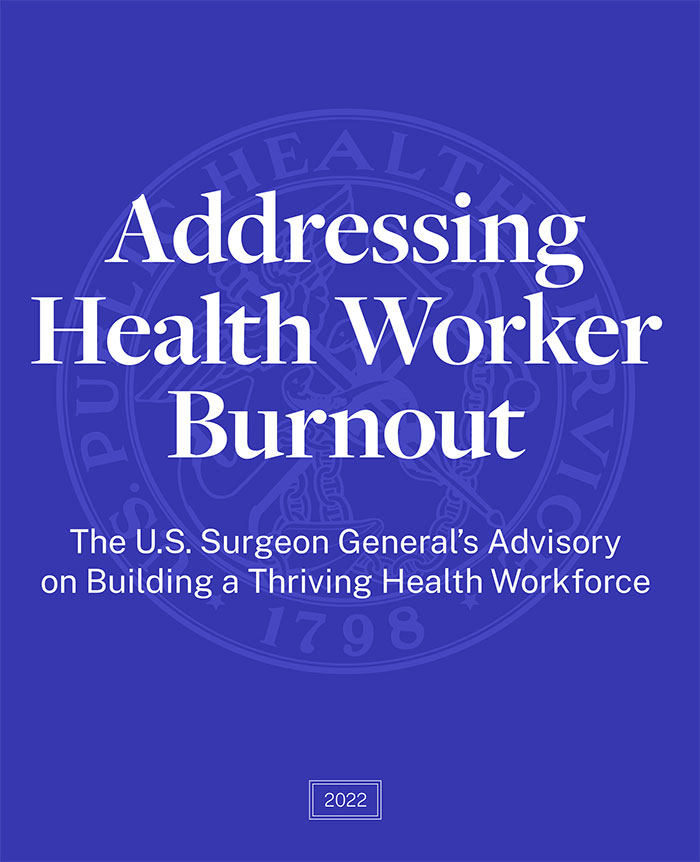
Black Older Adults With Cancer Are Far Less Likely to Get Any Care
New Study From LDI and MD Anderson Finds That Black and Low-Income, Dually Eligible Medicare Patients Are Among the Most Neglected in Cancer Care
Population Health
News

The largest repeated survey ever done of registered nurses aggregated by their employers provides new insights into the severity of nursing burnout and related poor patient outcomes during COVID-19. It characterizes the catastrophic workplace situations of the pandemic as the inevitable outcome of long years of inadequate staffing policies prior to the pandemic.
Conducted by the University of Pennsylvania School of Nursing’s Center for Health Outcomes and Policy Research (CHOPR), the survey polled more than 70,000 licensed registered nurses in New York and Illinois just before COVID-19 hit and 18 months later as the pandemic approached its zenith in the United States. The study is entitled “A Repeated Cross-Sectional Study of Nurses Immediately Before and During the COVID-19 Pandemic: Implications for Action.”

“Going back to pre-pandemic hospital working conditions will not solve the continuing disruptions in hospital care that have persisted even as the pandemic has ebbed,” said lead author and LDI Senior Fellow Linda Aiken, PhD, RN, FAAN. “Transformational improvements in hospital nurse staffing and clinical work environments are needed to stabilize the hospital nurse workforce and provide safe patient care.” Aiken is a Professor of Nursing and Sociology and CHOPR’s Founding Director.
The study asked nurses to report on working conditions, staffing adequacy, administrative policies directly affecting care delivery, patient outcomes, infection prevention practices, and management’s demonstrated priority for patient safety. While not likely to surprise hospital insiders, the survey’s findings might shock the general public who spent so much time during the last two years hailing health care facilities as heroic places and their nurses as the most trusted category of professional workers.
In their survey responses, over 69% of hospital nurses across both states cited a lack of confidence in hospital management to resolve clinical care problems reported by nurses before the pandemic. During the pandemic that lack of confidence rose to 78%.
Some 48% of nurses before the pandemic reported that the actions of management showed patient safety was not a top priority. That became a concern for 58% of nurses during the pandemic.
Before the pandemic, 64.9% of medical-surgical nurses reported insufficient staffing. That rose to 75% during the pandemic.
Pre-COVID, 54% of medical-surgical nurses were determined to be suffering from high burnout. That number rose to 58.9% during the pandemic.
Commenting on their findings, the research team concluded, “The high rates of nurse burnout during the pandemic appear to be largely a consequence of high burnout prior to the pandemic. Addressing the root causes of high nurse burnout and hospital job dissatisfaction before the pandemic is critical to achieving a stable, qualified hospital nurse workforce going forward.”

Those findings come just months after U.S. Surgeon General Vice Admiral Vivek Murthy, MD, MBA, issued a special advisory warning that burnout has reached “crisis levels” throughout the U.S. health care workforce.
“Burnout among health workers has harmful consequences for patient care and safety, such as decreased time spent between provider and patient, increased medical errors and hospital-acquired infections among patients,” the Surgeon General advisory says. “Burnout results in patients getting less time with health workers, delays in care and diagnosis, lower quality of care, medical errors, and increased disparities.”
One of the key drivers of burnout for nurses is the chronic stress caused by patient overload — when a single nurse has so many patients on a shift they are unable to deliver all the required care or effectively perform the patient surveillance required to maintain optimal patient outcomes. This nurse-to-patient staffing ratio is not a minor issue, although it is one most patients are unaware of, despite how crucial it is to their own care.
Over the last 20 years, more than 100 studies by academic researchers have produced evidence confirming the link between inadequate hospital nurse-to-patient staffing levels and poor patient outcomes up to and including unnecessary death. Nurse-to-patient ratios can vary across different hospital units depending on the intensity and complexity of care. A safe hospital nurse staffing standard established by law in California 20 years ago mandates that nurses in adult medical-surgical units care for no more than five patients at one time. Nevertheless, it is not unusual for many hospitals across the country to set nurse-to-patient workloads higher. One reason hospital administrators do this is to lower costs by having fewer nurse employees, meanwhile, they can press the remaining nurses to work harder. But this spreads less nursing care across a larger group of patients and can have very serious consequences.
A 2002 landmark study conducted by a Penn Nursing CHOPR team headed by Aiken found that in hospitals with high nurse-to-patient ratios, each additional patient per nurse was associated with a 7% increase in the likelihood of dying within 30 days of admission and a 7% increase in the odds of failure-to-rescue (or the failure to respond effectively to post-surgical complications). Each additional patient per nurse was associated with a 23% increase in the odds of nurse burnout and a 15% increase in the odds of nurse job dissatisfaction.
These findings have been repeatedly confirmed in many later studies. In addition, recent multiple studies headed by LDI Senior Fellow and Associate Director of CHOPR Margo Brooks Carthon, PhD, RN, have detailed how inadequate nurse-to-patient staffing ratios have the additional negative impact of increasing racial disparities in patient outcomes. This is because minorities have long experienced worse hospital outcomes due to structural racism, heavily weathered life conditions, and chronic diseases. The thinning of nursing attention in their in-patient care further increases the already poorer quality of these patients’ outcomes.
Aside from the California law over the last 20 years, 15 states have attempted to take various actions on the nurse-to-patient staffing issue at the same time such innovations have been vigorously opposed by the high-powered lobbying efforts of the American Hospital Association (AHA), its state affiliates, and related hospital industry stakeholders that have sought to halt or water down the efforts.
Currently:
• Eight states (CT, IL, NV, NY, OH, OR, TX, WA) require hospitals to have nurse staffing committees.
• One state (MN) requires hospitals to establish Chief Nursing Officers to develop staffing plans.
• One state (CA) has nurse-to-patient ratios set by law.
• Five states (IL, NJ, NY, RI, VT) require hospitals to publicly disclose or report their nurse-to-patient staffing ratios in various ways. For instance, in New Jersey, hospitals are required to provide quarterly reports to the state about their nurse-to-patient ratios and that data is made accessible to the public through the New Jersey Department of Health’s Hospital Patient Care Staffing website. By selecting from the list of all New Jersey hospitals, users can see and compare exact ratio reports. For instance, in the Medical-Surgical units of Cooper Hospital in Camden, New Jersey, there are 2.8 patients for every registered professional nurse and 12.2 patients for every unlicensed assistive personnel. By comparison, in the Medical-Surgical units of nearby Jefferson Hospital in Cherry Hill, there are 5.7 patients for each registered professional nurse and 15.4 patients for each unlicensed assistive personnel.
However, the new CHOPR cross-sectional study notes that, so far among all of those state programs, the only major policy response to chronic nurse understaffing that has succeeded in altering the quality of patient care is California’s. That law established in 2004 mandates minimum nurse staffing requirements and has resulted in California hospital patients receiving an average of 2-3 more hours per day of registered nursing care.
One of the latest political battles over a potential state law mandating nurse staffing minimums is currently underway in Pennsylvania.
In its coverage out of Harrisburg, the Pennsylvania Capital-Star newspaper reports that despite the majority support among legislators for passing a nurse-to-patient staffing minimums law, the measure has long been bottled up in the Republican-controlled House Health Committee.
The Capital-Star goes on to explain, “The political forces fighting over the proposal wield political muscle. The state’s hospital association regularly spends more than $1 million a year on lobbying the legislature, according to state records. On the campaign side, both the association and health care unions, such as [Service Employees International Union] SEIU Healthcare and the Pennsylvania Association of Staff Nurses and Allied Professionals, are active. The hospital association has contributed $3.2 million to politicians’ coffers in the past 24 years according to Follow the Money, an online database; SEIU Healthcare has given almost $900,000 over the last 10.”
Following the 2022 election, Democrats appear to have gained leverage in the Pennsylvania Legislature and bring with them new opportunities for the safe nurse staffing bill to move forward toward becoming law.
“Beyond politics, there are millions of patients currently receiving care in hospitals with too few nurses who are likely to unnecessarily die, or experience infections and other poor outcomes directly related to the thinned-out nursing care they receive,” said Aiken. “The heartfelt gratitude the public showed to nurses during the pandemic has not translated into public advocacy and policy actions to ensure that hospitals employ enough nurses for the provision of safe and effective care now and in the future. Much research shows that more nurses in hospitals is in the public interest; it is past time to act to make that happen.”


New Study From LDI and MD Anderson Finds That Black and Low-Income, Dually Eligible Medicare Patients Are Among the Most Neglected in Cancer Care

Her Transitional Care Model Shows How Nurse-Led Care Can Keep Older Adults Out of the Hospital and Change Care Worldwide

Chart of the Day: Medicare-Medicaid Plans—Created to Streamline Care for Dually Eligible Individuals—Failed to Increase Medicaid Participation in High-Poverty Communities

Penn LDI Debates the Pros and Cons of Payment Reform

Direct-to-Consumer Alzheimer’s Tests Risk False Positives, Privacy Breaches, and Discrimination, LDI Fellow Warns, While Lacking Strong Accuracy and Much More

One of the Authors, Penn’s Kevin B. Johnson, Explains the Principles It Sets Out